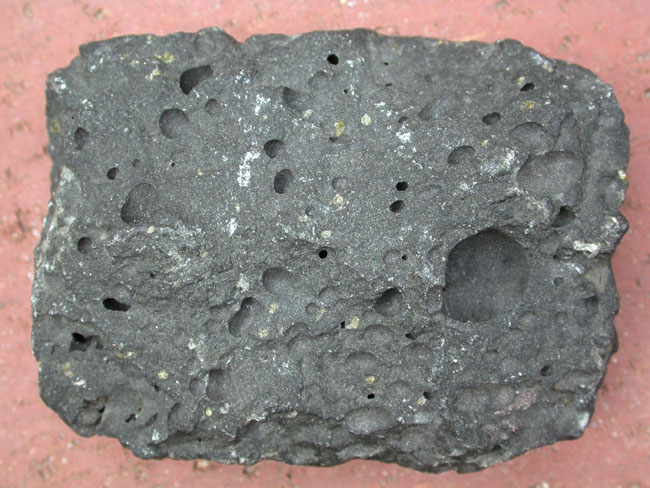As you may have read on the other forum thread, the stone I originally purchased for my rescape turned out to be Limestone. I went back to The Stone Store today and purchased 200 lbs of a red quartzite rock. It is quite different from regular quartz. It should look very nice in contrast to the black susbstrate.
Anyway, I was talking to the guy at The Stone Store and I mentioned the "Porous Mossy Rock" we use. He said he could probably find a source for it and if so, he would be willing to get a small amount to sell by the pound. He asked if we could email him a picture. Can anyone provide a good, clear picture?
Another interesting thing... I used the vinegar test on the Limestone and saw no reaction whatsoever. I then did what Sean suggested using powder scrapings. Sure enough, if fizzled... Good advice Sean.
More stuff about Rocks
Here is a pic of the limestone:
http://www2.snapfish.com/slideshow/Albu ... =comcast2/
Here is a pic of the quartzite:
http://www2.snapfish.com/slideshow/Albu ... =comcast2/
http://www2.snapfish.com/slideshow/Albu ... =comcast2/
Here is a pic of the quartzite:
http://www2.snapfish.com/slideshow/Albu ... =comcast2/
I did a bit of research on "porous mossy rock" when I first joined the club. The real name of the rock in question is Vesicular Basalt. Regular basalt is extremely dense, grayish in color, volcanic in origin, and may or may not exhibit striations/pockets of a secondary mineral within.

Vesicular basalt is identical to that description, however it is filled with thousands of "holes/bubbles." (vesicles) Vesicles are fossil bubbles. So, a rock that looks like Swiss cheese has a vesicular texture. Vesicles range in shape from spherical to elongated and in size from ~1mm to more than 1 cm. Basalts are most commonly vesicular. The drop in pressure that a magma experiences as it flows from underground to the Earth's surface allows water and gases in the lava to form bubbles. If the bubbles do not get large enough to pop, they are frozen in the lava as vesicles.


Vesicular basalt is identical to that description, however it is filled with thousands of "holes/bubbles." (vesicles) Vesicles are fossil bubbles. So, a rock that looks like Swiss cheese has a vesicular texture. Vesicles range in shape from spherical to elongated and in size from ~1mm to more than 1 cm. Basalts are most commonly vesicular. The drop in pressure that a magma experiences as it flows from underground to the Earth's surface allows water and gases in the lava to form bubbles. If the bubbles do not get large enough to pop, they are frozen in the lava as vesicles.

Jon Snyder
- chris_todd
- Posts: 1118
- Joined: Fri Oct 03, 2008 11:05 pm
- Location: Catonsville
It also means, once you know it is a volcanic rock, that you pretty much have a fat chance of finding it on the East Coast. 
Landscape yards in California are littered with the stuff. It is their cheap rock. Often considered a PITA, as it is hard to bust out and makes landscaping/pools a real nightmare.
Our cheap rock is primarily Limestone based rocks.
(Another note of irony, Manzanita is actually a scrub tree/big bush that is considered a nuisance/pest in the west. It is often clear cut/burned down to clear farmland. )
)
Landscape yards in California are littered with the stuff. It is their cheap rock. Often considered a PITA, as it is hard to bust out and makes landscaping/pools a real nightmare.
Our cheap rock is primarily Limestone based rocks.
(Another note of irony, Manzanita is actually a scrub tree/big bush that is considered a nuisance/pest in the west. It is often clear cut/burned down to clear farmland.
Dave

